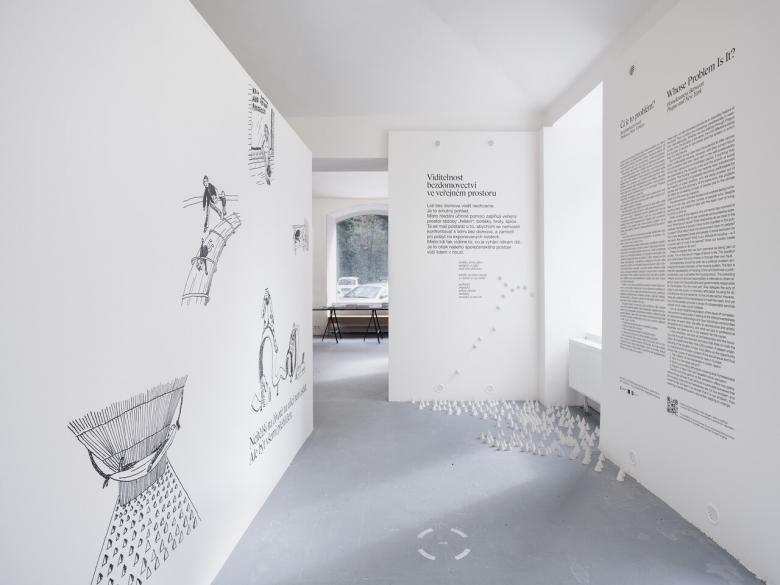Whose Problem Is It? Homelessness Between Prague and New York
These days, we see homeless people as an everyday feature of the street. Their numbers are increasing, paradoxically in wealthier cities especially. Whether we are walking through Prague or New York, the situation is the same, the only difference being the number of people in dire straits and the system in which they find themselves.
When looking at the reasons why someone has nowhere to sleep, we inevitably start to ask ourselves some pressing questions. What are our values? What relationship do we have to the weakest members of society? How is this manifest in the public space? What effect does the environment have on people? How many segregated areas and people in social exclusion do we have? Are we racist? What is our attitude to housing—is it a human right or must it be earned? Does our society create homeless people on its own?
These are people that we don’t perceive as being part of society. For us they are an image of failure in life. The question is to what extent this is by choice or through their own fault.
Homelessness should be seen as a political problem embodying the (dys)functionality of the housing system. The fact is that the inaccessibility of housing is first and foremost a political decision, e.g. to privatise the housing stock. The prevailing rhetoric around individual responsibility is intended to divert attention away from the politicians and governments responsible for the situation. For the most part, they delegate the duty of cities to provide public or minimally affordable housing for all, including low-income residents, to the private sector. However, cities are unable to force developers to meet this need. And yet low-income workers provide a range of indispensible services without which cities would collapse.
In this exhibition, we look at homelessness and the housing crisis through four thematic domains that draw on both the Czech (European) and New York (US) context. A deeper understanding of the situation in New York offers us the opportunity to understand the broader context of the social issue and thus correct the course of developments here in Europe:
–The visibility of homelessness in public space
–Who is a homeless person?
–Myths surrounding affordable housing and homelessness
–Racism in New York and targeted social exclusion
The fifth and final section of the exhibition offers two paths: where things will lead if we continue to persuade ourselves that the housing crisis and homelessness are not our problem; and where things will lead if we accept that it is our problem, thus sparking a social discussion and action leading to change.
The exhibition Whose Problem Is It? is a collaboration between the architect Karolína Kripnerová and the artist Janek Rous. Both have long been interested in social issues such as unaffordable housing, exclusion and homelessness, from the perspective of both architecture and contemporary art.
The initial impulse for the exhibition came from Karolína Kripnerová’s research visit to New York, which took place in spring 2023 thanks to a Fulbright scholarship at Community Solutions, thus expanding the theme to include the American context.

View of Whose Problem Is It? Homelessness Between Prague and New York, VI PER Gallery, Prague, 2024. Courtesy of VI PER Gallery. Photo: Anna Ritterová (Studio Flusser).
- When
- 15 March to 4 May 2024
- Where
-
VI PER Gallery
Vítkova 2
8 Prague, Czech Republic - Organizer
- VI PER Gallery
- Link
- More information
Magazine
-
Doodles on the Rooftop
Today
-
MONOSPINAL
Today
-
Building a Paper Log House
2 days ago
-
Chicago Bears Propose New Lakefront Stadium
2 days ago
-
Building Bridges with Chris Luebkeman
3 days ago